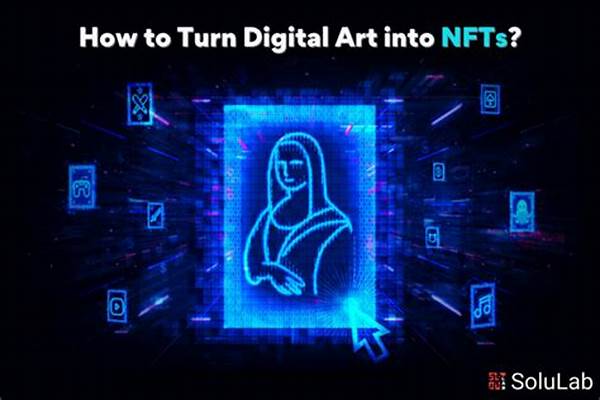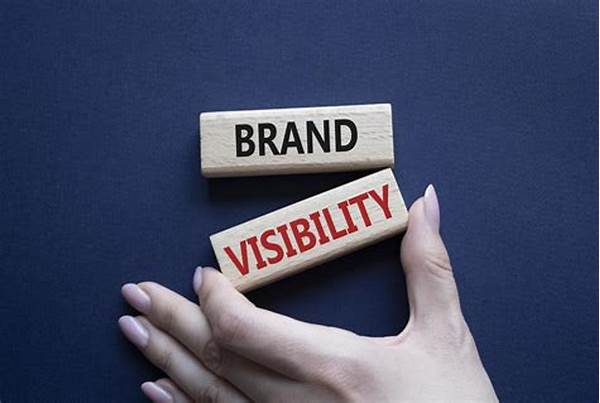The digital age has revolutionized the way we create, share, and monetize art. With the advent of blockchain technology, artists worldwide are discovering new avenues to showcase their work, one of which is transforming their art into Non-Fungible Tokens (NFTs). This process, while initially daunting, provides an innovative platform for artists to reach a global audience and secure their art’s value. In this article, we will explore how to turn your art into NFTs comprehensively, guiding you through the necessary steps.
Read Now : Money-saving Strategies For Artists
Understanding NFTs and Their Potential
Before diving into how to turn your art into NFTs, it’s essential to understand what NFTs are and the potential they hold for artists. NFTs are unique digital assets verified using blockchain technology, making them irreplaceable and ideal for representing digital art. They offer artists a chance to link their works to the blockchain, ensuring authenticity and ownership. Artists can now bypass traditional art market challenges, tapping into an enthusiastic community of digital art collectors. The process of converting your art into NFTs not only protects your creation but also enables you to connect with a new, tech-savvy audience. Moreover, it opens avenues for royalties, where artists can earn a percentage every time their NFT changes hands. As more creators embrace this digital frontier, understanding how NFTs work and the opportunities they present becomes crucial.
Steps to Turn Your Art into NFTs
1. Choose Your Blockchain: Select a blockchain that supports NFTs. Ethereum is the most popular, but others like Binance Smart Chain and Flow offer great options.
2. Set Up a Digital Wallet: Before you can mint an NFT, you’ll need a digital wallet to store cryptocurrencies and NFTs.
3. Select an NFT Marketplace: Platforms like OpenSea, Rarible, and Mintable make it easy to market and sell your art as NFTs.
4. Mint Your NFT: Upload your art onto the marketplace, filling in details like a title, description, and price to mint it as an NFT.
5. Promote Your NFT Art: Leverage social media and NFT communities to promote your work and attract potential buyers.
Legal and Ethical Considerations
When exploring how to turn your art into NFTs, understanding the legal and ethical dimensions is imperative. Legally, ensure you own the rights to the art you’re converting into an NFT. This can prevent any future copyright disputes. Ethically, transparency with potential buyers about what they are purchasing is crucial. As NFTs grow in popularity, so does the concern over carbon footprints. The environmental impact of blockchain technology, particularly proof-of-work systems, has brought about a push towards more sustainable solutions. While some artists have opted for eco-friendly blockchains, others actively participate in carbon offset programs. Navigating these challenges thoughtfully not only aligns with social responsibilities but adds value to your work in the eyes of conscientious buyers.
Common Mistakes When Creating NFT Art
There are several pitfalls artists might face when learning how to turn your art into NFTs:
1. Ignoring Costs: Be aware of transaction fees, known as ‘gas fees’, particularly on Ethereum.
2. Poor Market Research: Failing to understand your audience may lead to unrealistic pricing.
3. Neglecting Security: Weak passwords or unsecured accounts can lead to loss of assets.
4. Rushing to Mint: Take time to refine your art and profile for maximum appeal.
Read Now : Analyzing Email Performance For Artists
5. Underestimating Promotion: Due to competition, investing time in marketing your NFT is crucial.
6. Lack of Representation: Failing to provide a comprehensive backstory for your art can impact buyer engagement.
7. Ignoring Community Engagement: Engaging with potential buyers and collectors can create strong relationships and increase sales.
8. Poor Quality Control: High resolution and flawless presentation of digital art are mandatory.
9. Overlooking Legal Aspects: Secure intellectual property rights to prevent legal issues.
10. Environmental Impact Dismissal: Consider adopting environmentally friendly practices to offset your NFTs’ carbon footprint.
Long-Term Strategies for NFT Success
Focusing on how to turn your art into NFTs shouldn’t overshadow long-term strategies for success. Building a loyal following is vital. Create consistent art and maintain engagement through online communities and social media. Offer exclusive content or perks to NFT holders, fostering re-engagement. Monitor market trends, adapting to shifts and expanding your knowledge about NFT technologies. Collaborating with other artists can diversify your portfolio, extending your reach. Consider creating limited edition NFTs, adding exclusivity to your offerings. Diversification also applies to platforms; selling across multiple marketplaces can increase visibility. Remember, while NFTs present an exciting opportunity, sustaining success involves staying informed and creatively adaptive in an ever-evolving digital landscape.
Challenges and Opportunities in NFT Art
Transitioning how to turn your art into NFTs offers both challenges and opportunities. Among the challenges, the volatile nature of cryptocurrency markets can affect NFT values unpredictably. Skepticism from traditional art circles may also present initial resistance. Conversely, NFTs democratize the art world, allowing artists to gain recognition without intermediaries, and peer-to-peer transactions facilitate greater earnings. The opportunity for interactivity and innovation in digital art can lead to creative breakthroughs, enhancing the value of NFTs. Furthermore, as the technology and audience for NFTs expand, new platforms and tools continue to emerge, simplifying processes and opening fresh avenues for artistic expression.
Conclusion: A New Horizon for Artists
In summary, how to turn your art into NFTs is more than a technical process; it’s about embracing a cultural shift towards digital art recognition and monetization. The steps outlined provide a foundation, yet the journey is unique to each artist. Understanding the nuances of this digital marketplace, from legalities to ecosystem dynamics, can empower artists to make informed decisions. As you venture into NFTs, remain open to learning and adapting, leveraging this revolutionary platform to share your art with the world while ensuring it retains its creative and financial value.



